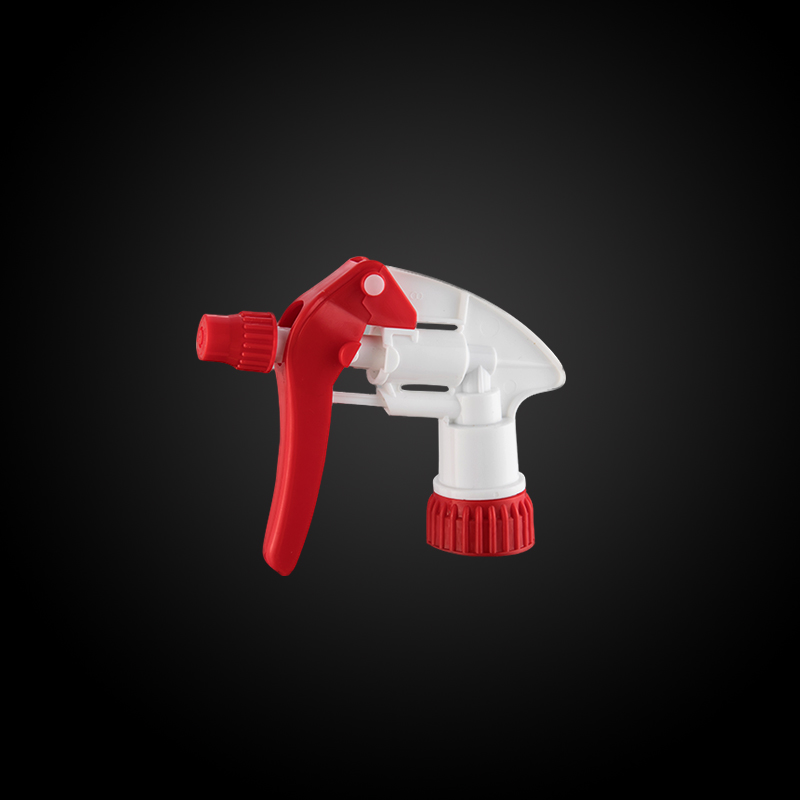In preparation for this piece, I conducted
trigger sprayer ethnographic research with a large group of target users in actual kitchen and bath cleaning settings. I watched how people store, handle, transport and use trigger sprayers. And, then, I showed consumers examples of various trigger sprayers in and out of the cleaning category.If you’ve ever purchased these spray cleaners, you know that there’s a lot going on at the point of sale. And, also, not very much. Most rely on product color showing through translucent bottles to convey efficacy and purpose. Interestingly, however, virtually none of the brands differentiate their trigger spray products by form, promised functionality or ergonomics.I say “virtually” because a few, such as Method, attempt to deviate from the norm. Unfortunately, consumers I talked to insisted that this break from the category actually hurt the product’s chances.

What the heck is it doing in the cleaning department?Now, that doesn’t mean that Method isn’t doing what it’s supposed to be doing for the folks it’s targeting. It just means that most of the consumers I talked to didn’t get it.Method aside, there’s not a lot of conspicuous structural variation on the shelf. But that’s not to say that ergonomics and usability have been ignored. Manufacturers have to accommodate infinite hand sizes, grip preferences and usage dynamics. Though, it looks to me as if they have made some very deliberate and necessary tradeoffs in designing their trigger sprayer units.So, how can I provide direction for improving such an iconic package structure when it must serve such a wide range of users and uses?The design strategy for the trigger sprayer has not kept up with its ubiquitous use across multiple surfaces in multiple settings.
The advent of the “all-purpose” cleaner has exacerbated this issue by expecting one bottle to perform well in all situations.While there may be some true “friction points” to be fixed, the real opportunity may be in delighting the consumer with a usage experience that delivers beyond her expectations.Admittedly, the women I observed say there’s nothing wrong with trigger spray bottles. But when I watched as they handled bottles throughout the experience cycle, from storage through disposal, I realized there are obvious opportunities for innovation.The storage sinkholeGranted, managing and organizing a multi-person household as all of these were is tough work. And a good look under the sink (kitchen and bath), where trigger spray products are primarily stored, bears this out. This is particularly interesting, because other storage locations and surfaces around the home show an almost compulsive urge to organize, label and contain.So what’s going on under the sink? Well, it’s a catch-all for many kinds of cleaning and non-cleaning products in co-mingled disarray.
Cleaning rags sit on top of spray bottles. Paper towel rolls meander. Spray cans, sponges, tools and even food products vie for the same real estate.As for trigger spray bottles, their bulbous, inefficient forms don’t help matters. Much under-sink terrain is marked by wall-to-wall underbrush, with trigger heads sprouting like treetops above the fray.The women I talked to count on the color of the spray head standing above the crowd to identify the product. But, even though the spray heads are color coded, there’s still some trial and error, as they pick up and drop the sprayers a few times until the right ones are located. See any opportunities so far?Some of these women place products in duplicate locations. Others transport a collection of cleaning paraphernalia from central storage to the in-use location. It’s clear that, for those who transport products around the home, there is an opportunity to help them manage multiple bottles along with other cleaning supplies.
